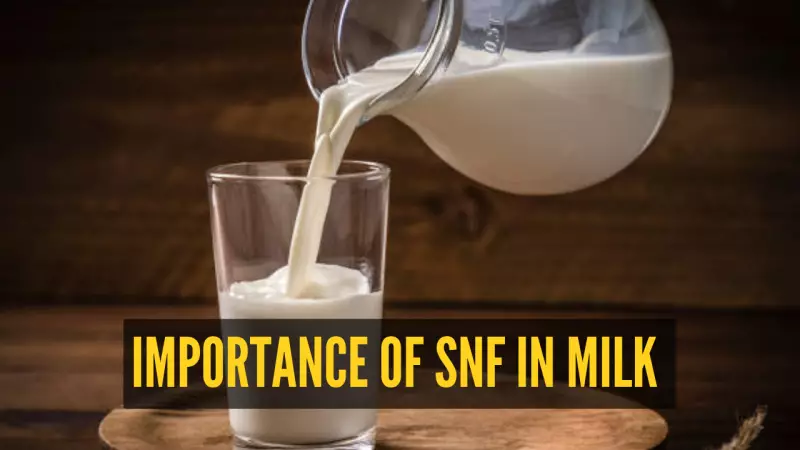
Have you ever glanced at the information on your milk packet and wondered what those mysterious numbers actually mean? While most of us check the fat percentage, there's another crucial component that deserves your attention - and it could be affecting your family's nutrition more than you realize.
The Hidden Health Code in Your Milk Packet
SNF, or Solid-Not-Fat, represents the nutritional powerhouse in your milk. This includes proteins, vitamins, minerals, and lactose - essentially everything except the fat content. When you see "low SNF" on a milk packet, it's essentially telling you that the milk contains less of these vital nutrients than what's considered standard.
Why SNF Percentage is Your Milk's Health Report Card
Protein Power: SNF directly indicates the protein content in your milk. Lower SNF means less protein, which is crucial for muscle building, tissue repair, and overall growth - especially important for children and active adults.
Vitamin and Mineral Content: Essential nutrients like calcium, potassium, and water-soluble vitamins (B2, B12) are part of the SNF. Low SNF translates to reduced nutritional benefits.
Quality Indicator: The SNF percentage serves as a reliable marker of milk quality and purity. It helps consumers identify if the milk has been adulterated or diluted with water.
What Exactly Does "Low SNF" Mean for Your Health?
When you consistently consume milk with low SNF, you're essentially missing out on:
- Reduced Nutritional Intake: Your body receives fewer proteins, vitamins, and minerals than expected
- Compromised Bone Health: Lower calcium content can affect bone density over time
- Weaker Immunity: Missing out on essential vitamins that support immune function
- Poor Value for Money: You're paying for milk but receiving diluted nutrition
How to Become a Smart Milk Shopper
- Always Check Both Numbers: Don't just look at fat percentage - make SNF percentage your second check
- Know the Standards: Familiarize yourself with FSSAI standards for different types of milk
- Compare Brands: Different brands may have varying SNF percentages for the same type of milk
- Understand Your Needs: Choose milk based on your family's nutritional requirements
The FSSAI Standards You Should Know
The Food Safety and Standards Authority of India has established clear guidelines for milk composition. For instance, standardized milk should contain a minimum of 8.5% SNF and 4.5% milk fat, while toned milk should have at least 8.5% SNF and 3% fat. These standards ensure you get the nutrition you pay for.
Beyond the Packet: The Bigger Picture
Understanding SNF isn't just about reading labels - it's about making informed choices for your family's health. In a country where milk is a dietary staple for millions, being aware of SNF percentages empowers you to ensure you're getting the genuine nutritional benefits you expect from this essential food item.
Next time you pick up that milk packet, take an extra second to check the SNF percentage. That small act could make a big difference in your family's daily nutrition and overall health.





